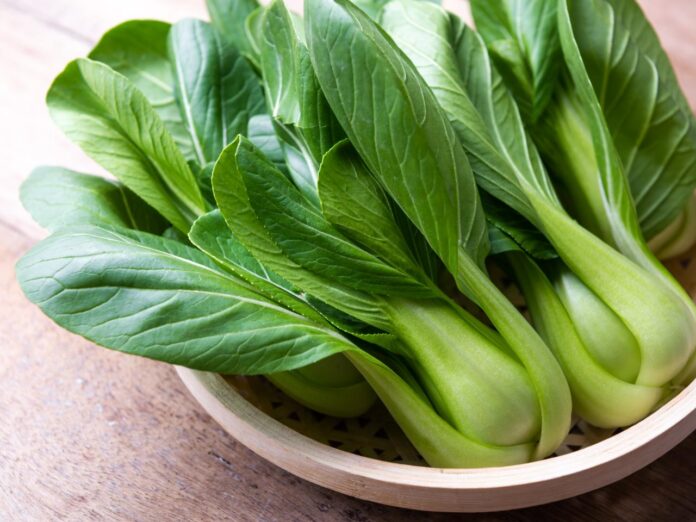Bok choy, also known as pak choi or Chinese cabbage, is a leafy green vegetable belonging to the Brassica family, which includes broccoli, kale, and cauliflower. Its scientific name is Brassica rapa subsp. chinensis, and it has been cultivated in China for thousands of years, where it remains a staple in the cuisine. Bok choy is characterized by its crisp white stalks and tender, dark green leaves. It has a mild, slightly peppery flavor, making it versatile in a wide range of dishes.
Interesting Facts About Bok Choy:
- Origin and Name: Bok choy, which translates to “white vegetable” in Cantonese, has been cultivated in China for over 1,500 years. Its name reflects the plant’s pale stems, which contrast with its dark green leaves. This vegetable plays a significant role in Chinese cultural and culinary traditions, appearing in ancient Chinese texts as a symbol of health and prosperity
- Type of Vegetable: As a member of the Brassica family, bok choy shares nutritional and structural similarities with other cruciferous vegetables like kale, cabbage, and cauliflower. It’s unique for having loose, spoon-shaped leaves and crunchy stems that don’t form a tight head, making it versatile in various culinary applications
- Nutritional Superfood: Bok choy is recognized as one of the most nutrient-dense foods on the planet. It ranks impressively high, placing sixth among all foods in terms of nutritional content per calorie.
- Nutritional Profile: A 100-gram serving provides 89% of the recommended daily intake of vitamin A, crucial for vision and immunity, 75% of vitamin C, which is vital for skin and tissue repair, and 57% of vitamin K, essential for blood clotting and bone health. Additionally, it supplies potassium, iron, and fiber, all contributing to overall well-being
- Diabetes Management: Antioxidants such as alpha-lipoic acid present in bok choy can help lower glucose levels, increase insulin sensitivity, and prevent oxidative stress-induced changes in people with diabetes. Studies suggest that consuming leafy greens like bok choy regularly may help reduce the risk of type 2 diabetes
- Versatile in Cooking: Bok choy is incredibly flexible in the kitchen. It can be lightly sautéed with garlic and ginger, added to soups for a crunchy texture, or even grilled for a smoky flavor. When used raw, it adds a refreshing crispness to salads, while in stir-fries, it complements bold flavors
- Two Varieties: Baby bok choy is tender and sweeter than the regular variety, making it ideal for salads or quick stir-fries. On the other hand, full-sized bok choy has a more robust texture and flavor, suitable for longer cooking methods like braising or roasting
- Growing Conditions: Bok choy grows best in cooler weather and is often planted in spring or fall. It matures rapidly, taking only 45 to 60 days from seed to harvest, depending on climate and growing conditions. Farmers often use it in crop rotation systems to keep soil healthy
- Storage: To keep bok choy fresh, it should be stored in the refrigerator’s crisper drawer and used within 3-5 days. It can be frozen after blanching, but freezing may alter its texture, making it suitable only for cooked dishes
- Unique Leaf Shape: The leaves of bok choy have a distinct spoon shape, which is not only visually appealing but also practical for scooping up soups and broths. This shape has led to the nickname “soup spoon,” commonly used in Southeast Asia
